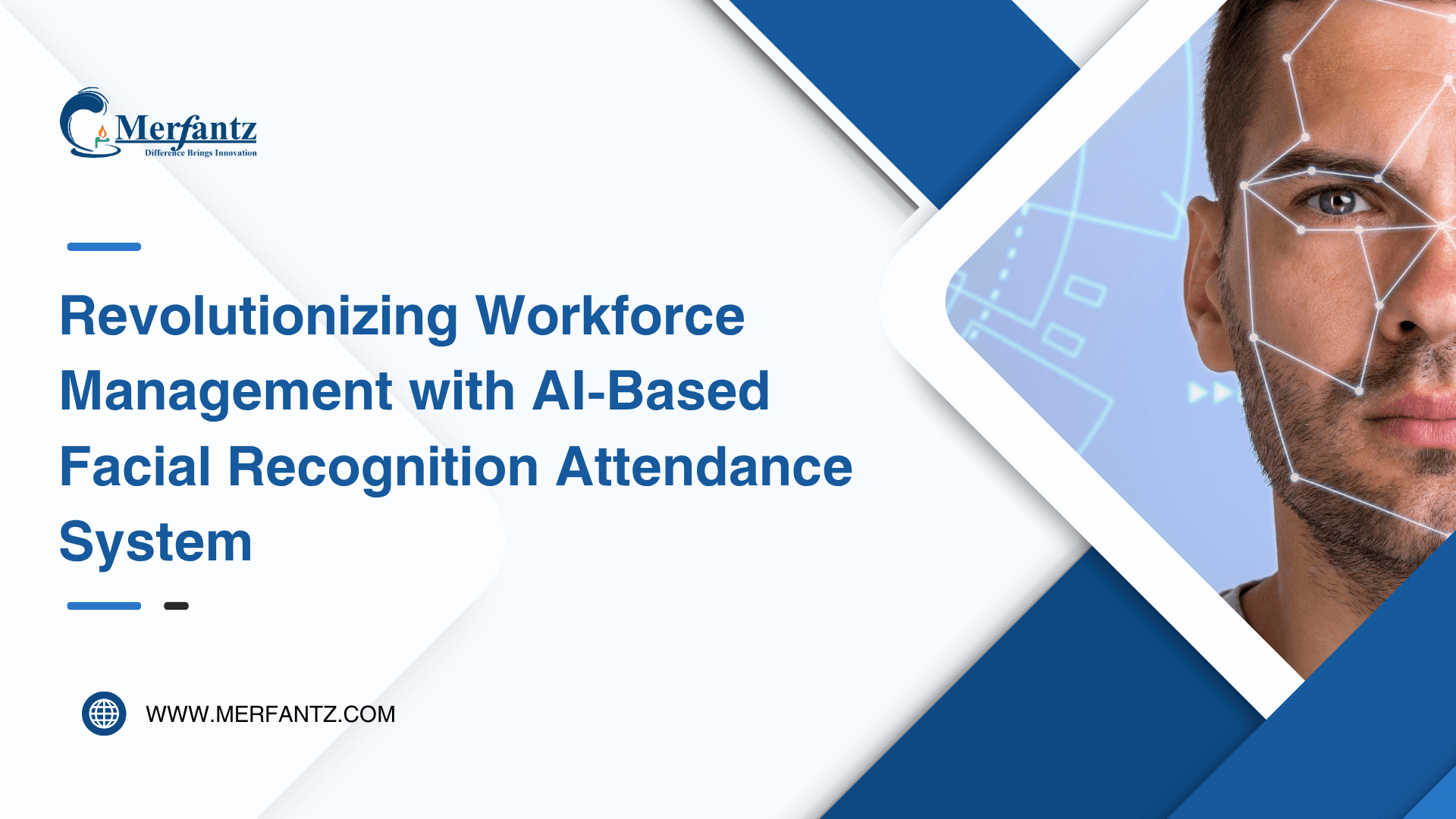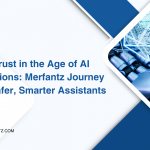
Introduction
In today’s fast-paced work environments, organizations are increasingly seeking smarter, contactless attendance solutions to manage their workforce efficiently. Manual attendance systems and even traditional biometric attendance methods often fall short in terms of speed, accuracy, and hygiene—especially in a post-pandemic world.
To address these challenges, we implemented an AI attendance system powered by facial recognition that automates employee time tracking in real-time. This case study explores how our facial recognition attendance system transformed workforce management through seamless integration of computer vision, deep learning, and real-time attendance tracking.
Business Challenges
Despite advances in HR and workforce management tools, many organizations still rely on outdated
time and attendance software such as:
- Manual Registers: Prone to human error, time-consuming, and easily manipulated.
- Swipe Cards & ID Systems: Subject to misuse through buddy punching and frequent card loss.
- Fingerprint Biometrics: Requires physical contact, raising hygiene concerns and leading to delays during peak hours.
- Lack of Real-Time Insights: Admins and HR teams struggle with delayed reporting, inaccurate logs, and no visibility into live attendance.
These limitations lead to:
- Reduced productivity due to long queues and time theft.
- Increased HR overhead for manual corrections and approvals.
- Security loopholes where unauthorized entries may go unnoticed.
- Difficulty scaling in multi-location or hybrid work environments.
There was a clear need for a contactless attendance, tamper-proof, real-time attendance tracking system that could operate seamlessly in varied lighting, camera angles, and even with face masks on.
What We Did
To tackle the inefficiencies of traditional attendance systems, we developed a real-time facial recognition attendance system that is both hardware-light and highly scalable.
Here’s how our solution works:
- Face Detection Engine: We built the system using OpenCV for real-time face detection and FAISS (Facebook AI Similarity Search) for fast and accurate face.
- No Special Hardware Required: Unlike fingerprint scanners or card readers, our system doesn’t require any additional hardware installations. A standard CCTV camera setup is sufficient to capture and process attendance.
- One-Time Employee Registration: Once an employee’s face is registered, the system stores their facial embeddings in the FAISS From then on, they are automatically recognized during entry—even with lighting changes or camera angle variations.
- Intelligent DB Handling: The system continues to identify and log attendance until the admin deletes the user from the FAISS database, ensuring tight control and flexibility over the workforce records.
This plug-and-play model makes the system highly suitable for companies looking to scale across multiple locations without investing in expensive biometric devices.
3a. Registration Process
The registration process is designed to be simple, quick, and accurate:
- Camera-Based Capture: When registering a new employee, the system activates the camera and continuously captures multiple images of the user’s face. This allows the model to learn the face under different angles, lighting conditions, and expressions.
- Embedding Generation: From the captured images, facial embeddings (numeric representations of the face) are generated and stored in the FAISS database for high-speed similarity matching.
- Improved Accuracy: Capturing multiple frames during registration enhances the accuracy and reliability of future face recognition—even if the person appears with minor changes like glasses, hairstyle, or facial hair.
3b. Detection Process
After successful registration, the system switches to real-time detection mode to recognize and log employee attendance:
- Continuous CCTV Feed Monitoring: The system listens to live video streams from standard CCTV cameras installed at entry/exit.
- Face Detection & Matching: Each frame is scanned using OpenCV to detect faces, and the detected facial features are converted to embeddings. These embeddings are then compared with existing records in the FAISS database for instant matching.
- Real-Time Response: Once a match is found, the system marks the attendance automatically with a timestamp and stores the event in the backend database no card tapping or user action required.
- Auto-Ignored Duplicates: To avoid multiple entries in a short span, the system implements a time threshold to ensure that repeated detections are filtered out.
This detection process runs silently in the background, ensuring uninterrupted, contactless attendance logging with high accuracy.
3c. Delete Users
Managing the user database is simple and admin-controlled, ensuring full control over who gets recognized by the system:
- Admin Panel Access: The system provides an admin interface where authorized personnel can view, search, and manage all registered users.
- One-Click Deletion: When an employee exits the organization or access needs to be revoked, the admin can delete the user from the FAISS database with a single
- Instant Deregistration: Once deleted, the user’s facial embeddings are permanently removed from the From that moment onward, the system will no longer recognize or track that person, even if they appear in front of the camera.
- Secure Operation: The deletion process is protected through authentication and logging to ensure that only authorized actions are recorded and traceable.
This makes the system flexible and secure, ensuring that attendance logs are always current and relevant to active employees only.
4a. OpenCV – Real-Time Face Detection
OpenCV (Open Source Computer Vision Library) is an open-source library focused on real-time computer vision. We use it for detecting faces in both registration and detection phases.
Key Uses in Our System:
- Face detection using Haar Cascades or DNN.
- Real-time frame processing from video streams (CCTV).
- Preprocessing steps like resizing, grayscale conversion, and face
Official Resources:
- OpenCV Homepage: https://opencv.org
- OpenCV Python Docs: https://docs.opencv.org/4.x/d6/d00/tutorial_py_root.html
- Face Detection Tutorial: https://docs.opencv.org/4.x/db/d28/tutorial_cascade_classifier.html
4b. FAISS – Fast Similarity Search
FAISS (Facebook AI Similarity Search) is a powerful library developed by Facebook AI Research to perform efficient similarity search and clustering of dense vectors. In our system, FAISS is used to store and compare facial embeddings.
Key Uses in Our System:
- Storing face embeddings (numerical vectors).
- High-speed nearest-neighbor matching of live detections with registered.
- Scalable performance even with thousands of users.
Official Resources:
- FAISS Homepage: https://faiss.ai
- GitHub Repository: https://github.com/facebookresearch/faiss
- Official Documentation: https://faiss.ai/index.html#documentation
5. Results
The implementation of our AI-powered facial recognition attendance system delivered measurable improvements across operational, administrative, and employee experience areas:
| Metric | Before Implementation | After Implementation |
| Attendance Marking Time | ~1 minute per employee | < 2 seconds |
| Accuracy of Attendance Logs | ~85% | 98%+ |
| Manual Interventions/Corrections | Frequent | Near Zero |
| Hardware Costs (per location) | ₹20,000–₹50,000 (biometric setup) | Nil (used existing CCTV) |
| HR Processing Time for Reports | 2–4 hours/week | Instant & Automated |
This project proves that integrating AI and computer vision into workforce management isn’t just possible—it’s highly impactful. By leveraging existing CCTV infrastructure and combining it with lightweight but powerful tools like OpenCV and FAISS, we created a scalable, accurate, and contactless attendance solution.
This implementation has enabled the organization to:
- Reduce operational friction.
- Boost trust in attendance data.
- Save time and costs.
- Scale easily across branches.
As businesses embrace digital transformation, AI-powered systems like this will become the new standard bridging the gap between security, automation, and efficiency.





